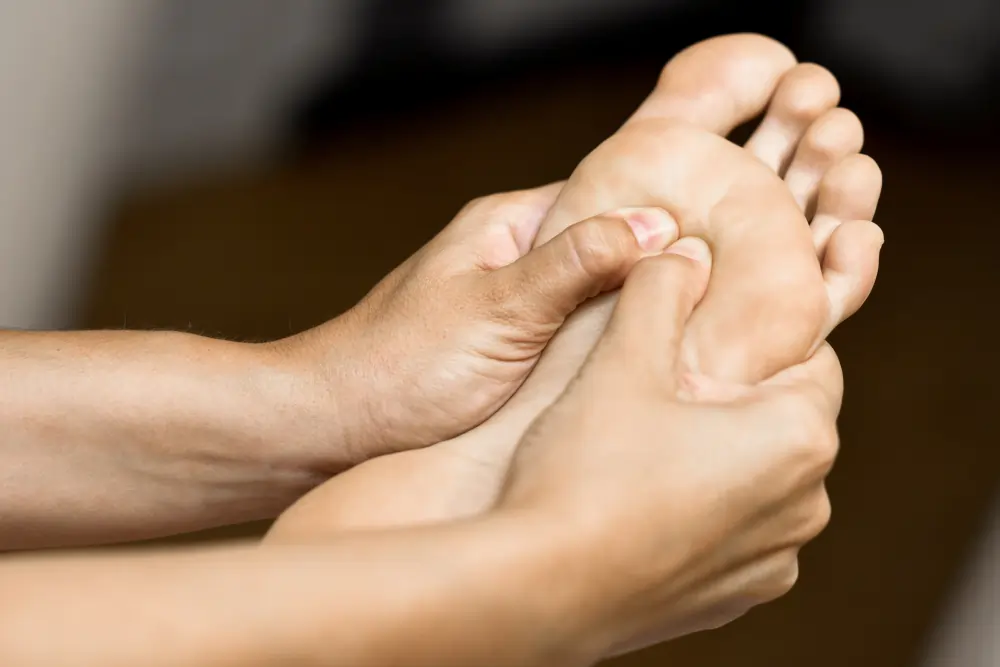
Diabetes is a chronic condition that affects millions of people worldwide. While medical treatments and lifestyle changes, play a crucial role in managing diabetes, complementary therapies such as reflexology can also offer significant benefits. In this step-by-step guide, we will explore how reflexology can assist in diabetes control and provide you with practical techniques to incorporate into your daily routine.
Introduction
Living with diabetes requires constant effort and awareness in maintaining blood sugar levels and overall health. Reflexology, an ancient healing technique, offers a holistic approach that complements traditional medical treatments. By stimulating specific reflex points on the feet, reflexology promotes relaxation, improves circulation, and supports the body’s natural healing processes.
To fully comprehend the potential of reflexology for diabetes control, it is essential first to understand how this practice works and its effects on the body.
Understanding Reflexology
Reflexology is based on the principle that various reflex points on the hands, feet, and ears correspond to specific organs, glands, and body systems. By stimulating these points, reflexology aims to promote balance, enhance well-being, and potentially, offer a supportive role in diabetes management.
When it comes to diabetes control, reflexology focuses on stimulating particular reflex points on the feet that correspond to organs involved in insulin production and regulation. By massaging and stimulating these areas, reflexology aims to enhance the functioning of the pancreas, liver, and kidneys, thus indirectly impacting blood sugar levels.
Preparing for Reflexology

Before beginning your reflexology session, it is crucial to create a clean and comfortable environment. Choose a quiet space where you can sit comfortably with your feet elevated. Ensure that your feet are clean and free from any wounds or infections.
Gather the necessary supplies, such as warm water, a towel, and a natural oil or lotion for foot massage. It’s important to use a non-slip surface or cushion underneath your feet to prevent any accidents.
However, reflexology is not suitable for everyone. It is recommended to check for any contraindications, such as foot injuries, infections, or certain medical conditions. If you have any concerns, consult with a healthcare professional before attempting reflexology.
Step-by-Step Reflexology Guide
Step 1: Warm up and relax the feet
Before diving into specific reflex points, it’s essential to warm up and relax the feet. Fill a basin with warm water and soak your feet for 10-15 minutes. This helps to soften the skin, improve blood circulation, and prepare the feet for the reflexology session.
Step 2: Begin with a general foot massage
After drying your feet, apply a small amount of natural oil or lotion to your hands to prevent friction. Start by massaging the entire foot using gentle yet firm strokes. Pay attention to the arches, heels, and balls of the feet, as these areas tend to carry a lot of tension.
Step 3: Stimulate specific reflex points
Now it’s time to focus on the reflex points. Using your thumb, apply moderate pressure to the various reflex points on the feet associated with diabetes control. These points include:
- The pancreas reflex point is located on the inner edge of the foot’s arch.
- The liver reflex point is located on the right foot, just below the ball of the foot.
- The kidney reflex point: Located on the inner side of the foot, just below the waistline.
Move your thumb in a circular motion on each point for 1-2 minutes, focusing on any areas that feel tender or sensitive. Remember to breathe deeply and relax throughout the process.
Step 4: Focus on the pancreas reflex point
As the pancreas plays a pivotal role in insulin production, focusing on its reflex point is crucial for diabetes control. Use your thumb to apply slightly deeper pressure and perform small circular motions on the pancreas reflex point. Imagine the positive energy flowing through your touch and supporting the organ’s optimal functioning.
Step 5: Repeat the process regularly
To experience the full benefits of reflexology for diabetes control, it is essential to repeat this process regularly. Aim for at least three sessions per week, each lasting 15-30 minutes. Consistency is key when it comes to reflexology, as cumulative effects and long-term improvements often emerge with dedicated practice.
Additional Techniques and Tips
To enhance your reflexology experience, consider incorporating the following techniques and tips:
Essential oils for foot massage

Adding a few drops of essential oils, such as lavender or peppermint, to your massage oil can enhance relaxation and provide additional aromatherapy benefits. These oils have soothing properties and may help reduce stress and elevate your mood during the reflexology session.
Reflexology tools for enhanced results
While using your hands and thumbs is effective, certain tools can amplify the benefits of reflexology. Tools like wooden foot rollers or reflexology socks with textured surfaces allow you to stimulate reflex points more easily, providing a deeper sense of relief and relaxation.
Self-reflexology techniques
If accessing a professional reflexologist is challenging, you can learn self-reflexology techniques to perform at home. Various online resources, books, and videos offer guidance on how to navigate specific reflex points and optimize the benefits of reflexology for diabetes control.
Benefits of Reflexology for Diabetes Control
Incorporating regular reflexology sessions into your diabetes management routine can yield several benefits:
Improved blood circulation
Reflexology promotes better blood circulation throughout the body, including the extremities. This enhanced circulation ensures that organs receive an adequate supply of oxygen and nutrients, facilitating optimal organ functioning.
Reduced stress and anxiety levels
Living with diabetes can be stressful, and stress may impact blood sugar levels. Reflexology induces deep relaxation and helps to reduce stress and anxiety, allowing the body to enter a state of calm. By managing stress, reflexology indirectly supports maintaining stable blood sugar levels.
Enhanced relaxation and overall well-being
Reflexology is renowned for its relaxation benefits. By dedicating time to pamper your feet and stimulate reflex points, you’re investing in your overall well-being. The pleasurable sensations and release of tension can improve sleep quality, boost mood, and foster a sense of tranquility.
Research and Evidence
While reflexology has been practiced for centuries, scientific research exploring its effects on diabetes control is still emerging. Several studies have shown promising results in terms of reflexology’s effectiveness in managing blood sugar levels, enhancing insulin sensitivity, and peripheral nerve function. However, further research is needed to establish more robust conclusions.
Precautions and Considerations
While reflexology is generally safe, there are certain precautions to keep in mind:
- Avoid reflexology if you have open wounds, ulcers, or infections on your feet.
- If you have a foot or ankle injury, consult a healthcare professional before attempting reflexology.
- If you are pregnant or have specific medical conditions, such as foot neuropathy or blood clotting disorders, it is advisable to consult with a healthcare professional before trying reflexology.
Conclusion
Reflexology offers a natural and complementary approach to diabetes control. By incorporating specific techniques and focusing on relevant reflex points, reflexology can contribute to better blood circulation, reduced stress levels, and an overall heightened sense of well-being. As with any complementary therapy, consult with your healthcare provider to ensure reflexology aligns with your individual needs and complements your existing diabetes management routine.
FAQs
1. Can reflexology alone cure diabetes?
Reflexology is not a cure for diabetes. It can, however, complement medical treatments and lifestyle adjustments to help manage the condition more effectively.
2. How often should I do reflexology for diabetes control?
To experience the benefits, aim for at least three reflexology sessions per week, each lasting 15-30 minutes. Consistency is key for long-term results.
3. Can I perform reflexology on myself?
Yes, self-reflexology techniques can be learned and performed at home. Online resources and books offer guidance on navigating reflex points for self-treatment.
4. Are there any side effects of reflexology for diabetes control?
Reflexology is generally safe, but some individuals may experience temporary tenderness or sensitivity at reflex points. If you have specific medical conditions, consult with a healthcare professional.
5. Is reflexology suitable for all types of diabetes?
Reflexology can benefit individuals with both type 1 and type 2 diabetes. However, it is always advisable to consult with a healthcare professional to ensure its suitability for you.


